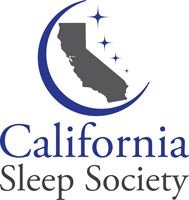By: Andrew Binder, MD, FAASM, FCCP
I love being a sleep doctor. I often introduce myself as a “recovering pulmonary and critical care doctor.” One of the reasons I love being a sleep doctor is that I think it is one of the few things, in my advanced age, at which I am still improving. In my earlier years, I now realize, I did not do my best when dealing with patients suffering from circadian misalignment. I did a reasonable job when dealing with teenagers who had delayed sleep phase syndrome (DSPS), but I fear that I neglected patients who had more subtle forms of circadian misalignment contributing to their sleep complaints. While it is good to learn from your mistakes, it is even better to learn from the mistakes of others. That is my motivation for writing this article. What follows is opinion-based, derived from my experience, gained over many years, from interviewing and treating patients with sleep complaints.
When patients come to a sleep office for consultation, they are usually concerned about sleep apnea, insomnia, restless legs, excessive sleepiness, or abnormal behavior during sleep. Only a minority will specifically complain about shift work, delayed sleep phase syndrome, or advanced sleep phase syndrome. If they snore, we as sleep professionals will dive right into the sleep apnea work up. If they complain about insomnia, we certainly are more likely to question them about their sleep-wake schedule.
In retrospect, I am guilty of failing to identify circadian misalignment as a problem for patients when their chief complaint has diverted my focus elsewhere. I now realize that a high percentage of patients coming to my office have a circadian component that contributes to their sleep complaints.
To rectify this, I wish to share my strategy which I have developed more recently: my first question to every new patient is, “What time do you wake up in the morning?” I have found that the typical answers I get are variations of two basic responses:
- “It depends,” or “It varies.” OR
- “I get up the same time every morning and I can’t sleep in on weekends, even when I try.”
For me, the response to this question identifies the genetic chronotype of the individual. I have been unable to find a definitive answer in the medical literature regarding what percentage of the population are Night Owls. Some believe that Night Owls comprise less than 20% of the general population. If that is correct, Night Owls are certainly over-represented in my sleep practice. The patients with inconsistent wake-up times or those that sleep late on weekends almost always identify themselves as Night Owls.
Circadian misalignment is pervasive in our culture and many factors exacerbate the problem including the need for long commutes to work, and of course, the irrational national policy that has us switching back and forth between Standard Time and Daylight Savings Time. In my practice, the Night Owls have more sleep problems and mood disorders.
Sleep onset insomnia in adults and adolescents is almost always due to circadian misalignment unless the patient suffers from restless legs (RLS). The solution, of course, is to encourage these patients to adopt a consistent wake up time which usually means they should not sleep late on weekends or on their non-workdays. Those patients who are night owls and must get up in the dark to commute to work, or adolescents who get up in the dark to go to school, present special problems, and they may require the use of bright light therapy in the morning to help entrain their sleep wake schedule.
All of us who deal with sleep patients will have different approaches to dealing with circadian misalignment once this problem is identified, but the important thing is to recognize that a circadian issue is in fact present and contributes to the patient’s sleep problem.
Another component of my strategy in dealing with circadian issues once identified is to use an analogy to help patients understand the problem. I am a Morning Lark, so I tell patients that the clock in my brain is like an Apple watch: it never runs fast or slow, so I get up at a consistent time without an alarm clock, regardless of when I went to sleep. If the patient is a Night Owl, I explain that the clock in their brain is like a cheap wind-up watch which always runs slow, and therefore it must be reset every morning.
I also emphasize that our internal clock is not a “sleep-promoting” clock, but rather it is a “sleep- preventing” clock. I believe this helps patients understand that, if they are a night owl, they cannot expect to successfully fall asleep early on Sunday night for an early wake-up time on Monday morning if they continue to sleep late on weekends.
My goal in writing this has been to give practical advice to my colleagues in the Sleep field. Sleep apnea and insomnia dominate the public’s concerns about sleep, but I believe that circadian misalignment is prevalent and perhaps not addressed adequately. In medical school, when learning how to do a physical exam, my instructor said, “You only find what you look for.” I have now learned to apply that principle to circadian misalignment.

